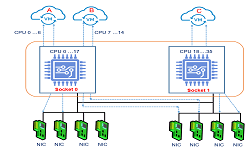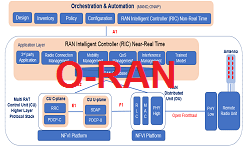What is Cloud Computing
Cloud computing is the on-demand availability of computer system resources, especially data storage and computing power, without direct active management by the user. The term is generally used to describe data centers available to many users over the Internet. In other terms, it is the delivery of computing services—including servers, storage, databases, networking, software, and analytics etc. over the Cloud (Internet) to offer flexible resources, and economies of scale.
Cloud computing is a more efficient way of delivering computing resources where a user can access applications and files by logging in from any device that has an internet connection. Information and programs are hosted by outside parties (such as Amazon-AWS, Google-GCP, Microsoft-Azure etc.) and reside on a global network of secure data centers instead of on the user’s hard drive.
With cloud computing, service environment is subscription based, users have to pay a monthly/annually fee instead of buying licenses of that particular service. Software and platforms are managed by the providers and are updated continuously for maximum performance and security. Users get all the benefits in terms of scalability, redundancy, control of its resources.
Cloud computing characteristics and benefits

On-demand self-service: End users can spin up compute resources for almost any type of workload on demand basis and has to pay only for the resources being used. This eliminates the traditional need for IT administrators to provision and manage compute resources.
Broad Network Access: Applications and data are not tied to a specific hardware or region. They are accessible from globally, enabling real-time collaboration by remote teams.
Resource pooling: Resources (like CPU, Storage, and Network) are not tied to a particular application; these are pooled across multiple applications.
Rapid Elasticity: Companies can scale up as computing needs increase and scale down again as demands decrease. User can provision the amount of resources that you actually need, knowing you can instantly scale up or down with the needs of your business. This eliminates the need for massive investments in local infrastructure, thus reduces the cost.
Measured service: Compute resources are measured at a granular level, enabling users to only pay for what they use, usually on a per-month, per-seat basis.
Workload resilience: Cloud service providers often implement redundant resources to ensure resilient storage and to keep users’ important workloads running — often across multiple global regions.
Migration flexibility: Organizations can move certain workloads to or from the cloud — or to different cloud platforms — as desired or automatically for better cost savings or to use new services as they emerge.
Cloud computing deployment models
Not all clouds are the same and not one type of cloud computing is right for everyone. Several different models, types and services have evolved to help offer the right solution for your needs.
Broadly, there are three different ways to deploy cloud services: on a public cloud, private cloud or hybrid cloud.
Public cloud
A cloud is called a “public cloud” when the services are rendered over a network that is open for public use. Public clouds are owned and operated by a third-party cloud service providers, which deliver their computing resources like servers and storage over the Internet. Generally, public cloud service providers like Amazon Web Services (AWS), IBM, Oracle, Microsoft and Google own and operate the infrastructure at their data center and access is generally via the Internet.
Private cloud
Private cloud is cloud infrastructure operated solely for a single organization, whether managed internally or by a third party and hosted either internally or externally. A private cloud is one in which the services and infrastructure are maintained on a private network. Generally, private cloud is considered to be more secure as it is managed for a private organization.
Hybrid cloud
Hybrid clouds combine public and private clouds, bound together by technology that allows data and applications to be shared between them. By allowing data and applications to move between private and public clouds, a hybrid cloud gives your business greater flexibility, more deployment options and helps optimize your existing infrastructure, security and compliance. Varied use cases for hybrid cloud composition exist. For example, an organization may store sensitive client data in house on a private cloud application, but interconnect that application to a business intelligence application provided on a public cloud as a software service. This example of hybrid cloud extends the capabilities of the enterprise to deliver a specific business service through the addition of externally available public cloud services.
References:
https://en.wikipedia.org/wiki/Cloud_computing#Deployment_models



